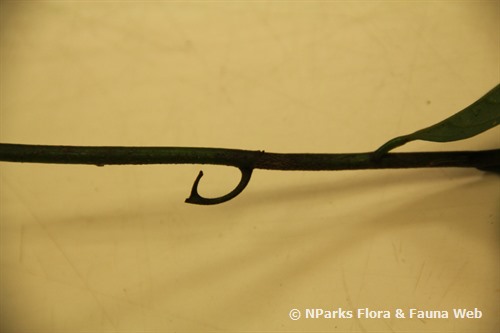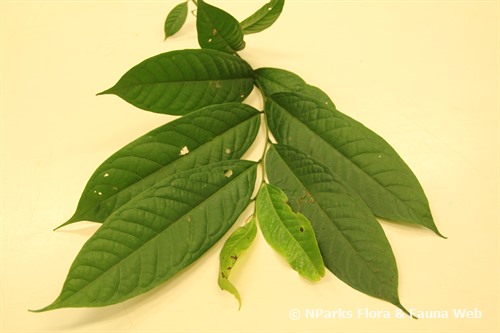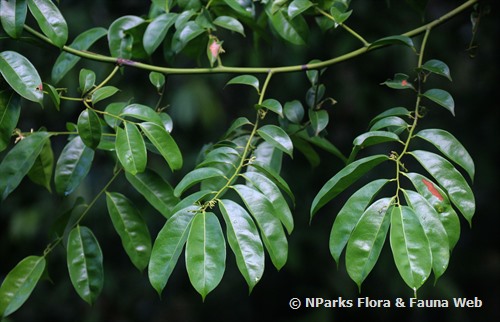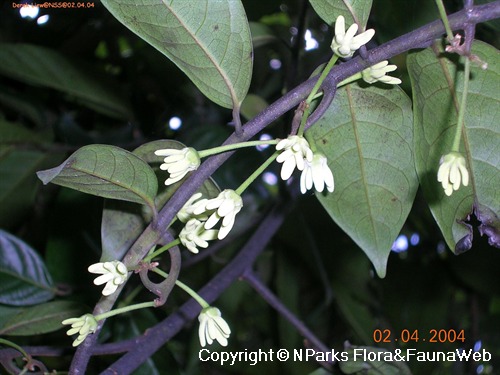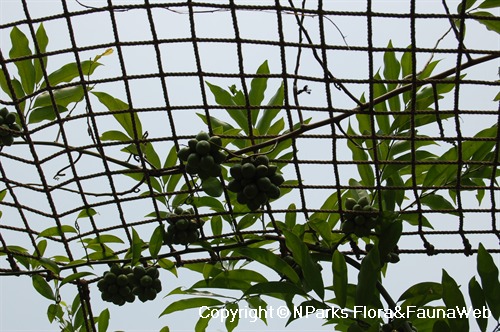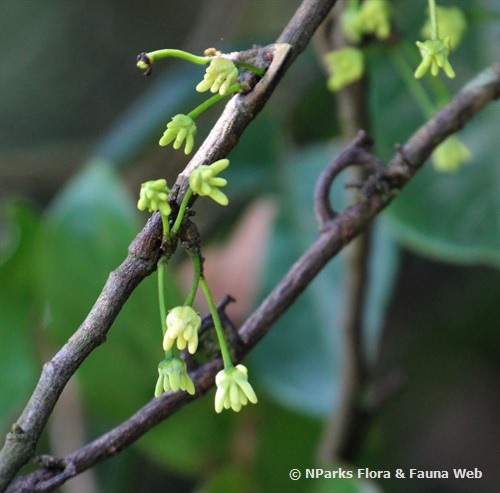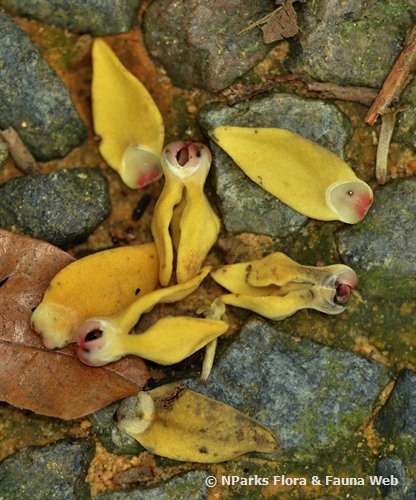
Name
Classifications and Characteristics
| Plant Division | Angiosperms (Flowering Seed Plants) |
|---|---|
| Plant Growth Form | Climber |
Biogeography
| Native Distribution | Myanmar, Peninsular Malaysia, and Singapore |
|---|---|
| Native Habitat | Terrestrial |
| Preferred Climate Zone | Tropical |
| Local Conservation Status | Native to Singapore (Endangered (EN)) |
Description and Ethnobotany
| Foliage | Its stalked leaves have leathery leaf blades that are elliptic to oblong, glossy, dark green on both surfaces, not covered with hair above, covered with fine hair below, and 13–18 by 5–9.5 cm. Its leaf blade midrib is hairless and flat above, and sparsely fine hairy below. |
|---|---|
| Flowers | Its yellow flowers are about 3.8 cm long, have oblong-lance-shaped petals that are leathery and covered densely with woolly hair. |
| Fruit | Its fruits grow in clusters of about 8, are slightly egg-shaped to drop-shaped, and 2–3 cm wide. The fruit contains 2 oblong, flattened seeds that are about 2.2 by 1.3 cm. |
| Habitat | It grows in forests. |
| Associated Fauna | Its flowers are insect-pollinated. |
| Etymology | Greek Artabotrys, hanging fruit; Latin crassifolius, with leathery leaves, referring to the leaf blades of this species |
Landscaping Features
| Landscape Uses | Parks & Gardens |
|---|
Plant Care and Propagation
| Light Preference | Full Sun, Semi-Shade |
|---|---|
| Water Preference | Moderate Water |
Foliar
| Mature Foliage Colour(s) | Green |
|---|---|
| Mature Foliage Texture(s) | Leathery |
Floral (Angiosperm)
| Flower Colour(s) | Yellow / Golden |
|---|
Image Repository
Others
| Master ID | 30974 |
|---|---|
| Species ID | 5361 |
| Flora Disclaimer | The information in this website has been compiled from reliable sources, such as reference works on medicinal plants. It is not a substitute for medical advice or treatment and NParks does not purport to provide any medical advice. Readers should always consult his/her physician before using or consuming a plant for medicinal purposes. |

